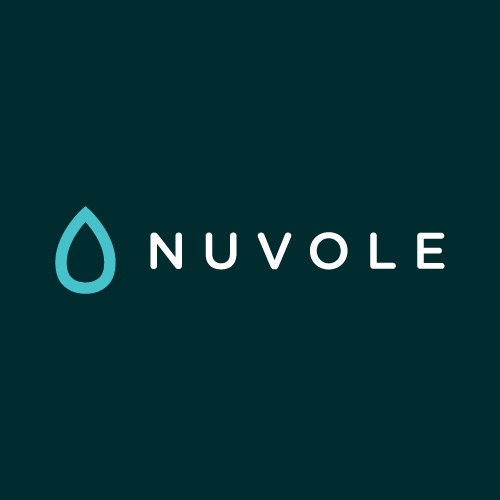May 09, 2025
11min Read

If you’re running an ecommerce business, you know that marketing is the lifeblood of your brand.
But the big question is: how much should you spend on marketing, and where should that money go?
The answer: Ecommerce businesses generally allocate between 7% and 12% of their total revenue to marketing, though this figure can rise to as much as 20% for newer or more growth-focused brands.
In this guide, we will walk you through exactly what ecommerce marketing budget is, why it matters, how to build one that fits your business, and how to make sure every dollar you spend brings in results.
Whether you’re just starting out or trying to scale, you’ll walk away with actionable tips and tools to budget smarter and grow faster.
Key takeaways
- Most ecommerce brands spend 7–12% of revenue on marketing.
- Channel allocation depends on your goals, stage of growth, and target audience.
- Paid advertising often gets the biggest share, but don’t underestimate the power of organic channels.
- Invest in the right tools, track ROI, and stay flexible to evolve your budget as you grow.
The fundamentals of ecommerce marketing budgets
An ecommerce marketing budget is a financial blueprint that outlines how much your online store will spend on marketing and where exactly that money will go.
It sets the limits and priorities for where you’ll invest your marketing dollars, making sure every campaign is backed by sufficient funds for reaching new customers, keeping current ones engaged, and building your brand.
It typically includes financing a range of marketing activities across different channels, like:
- SEO
- Paid ads
- Email campaigns
- Content marketing
- Social media
- Influencer partnerships
But it’s not just a list of expenses. A good marketing budget also reflects your business goals, timelines, and expected return.
Why is having a marketing budget crucial for ecommerce success?
If you’re running an ecommerce business without a marketing budget, you’re essentially gambling with your money.
A well-defined budget forces you to set clear objectives, prioritize strategies that actually work, and avoid the all-too-common trap of overspending with little to show for it.
On top of that, a solid budget is often part of a larger business plan. Investors and partners want to see that you’re thinking ahead and making financially responsible decisions.
Key components of an effective ecommerce marketing budget
Before we talk numbers, let’s talk structure.
To create an effective marketing budget, you need to be intentional with every dollar you spend.
Here are the essential components to include:
- Clear marketing objectives – Your goals should be specific and measurable. Are you trying to increase traffic? Boost conversions? Build your brand? Knowing what you’re aiming for helps guide every spending decision.
- Alignment with business goals – Your marketing spend should directly support your overall business objectives. For example, if you’re launching a new product, you should allocate more to awareness campaigns.
- Channel allocation – Divide your budget across SEO, PPC, email, social media, content, etc., based on past performance and your target audience. For instance, if your TikTok ads are generating better returns than your Google Ads, it might be worth investing more funds there.
- Customer acquisition and retention strategy – You could set aside a portion of your budget for loyalty programs, email nurture campaigns, or exclusive offers for repeat buyers to keep your existing customers happy and engaged.
- Testing and experimentation funds – Marketing is constantly evolving, so make sure you save room for A/B testing, pilot campaigns, and trying out new platforms.
- Flexibility – Be ready to adjust your strategy and your budget whenever you see a shift in buyers’ behaviour and ecommerce trends, or a change in search algorithms.

Determining your ideal ecommerce marketing budget
How much should you set aside for your ecommerce marketing budget?
We can’t give you an exact number, but there are a few battle-tested approaches that can help you settle on a realistic and results-driven figure.
Common methods for calculating your marketing budget
Let’s break down the most popular methods with explanations and formulas:
The percentage of revenue approach
This is one of the most widely used methods, especially for established businesses.
You simply allocate a fixed percentage of your gross revenue toward marketing.
You would use the following formula to calculate the budget:
Marketing budget = Total revenue x Percentage allocated to marketing
For example, if your revenue is $500,000 and you allocate 10%, your budget will be $50,000.
Goal-oriented approach
This method starts with your specific marketing goals and works backward to figure out what you need to spend to achieve them.
You would calculate it using the following formula:
Budget = Number of New Customers × Customer Acquisition Cost (CAC)
For instance, if your goal is to generate 1,000 new customers, and your average Customer Acquisition Cost (CAC) is $50, your budget needs to be $50,000.
Competitive benchmarking
Here, you analyze what similar businesses in your niche are spending and use that data to guide your own budget.
A common formula for this approach is:
Marketing Budget = Your Total Revenue × Industry Average Marketing Percentage
For example, if your annual revenue is $500,000 and the industry average for marketing spend is 10%, your budget would be $500,000 × 10% = $50,000
You can find out how much your competition is spending on marketing by tapping into one of the following resources:
- Industry reports and surveys. Organizations like Gartner or Statista publish regular reports on marketing spend by sector, business size, and model (B2B vs B2C).
- Public competitor data. If a competitor is publicly traded, you can check their annual reports or investor presentations. They often include marketing or SG&A (Selling, General & Administrative) breakdowns.
- Ad intelligence tools. Platforms like Similarweb, SEMrush, or SpyFu can help you estimate how much your competitors might be spending on digital advertising, particularly on paid search and display. While they can not generate precise figures, they can give estimates about where your competitors are focusing their ad spend.
The affordable method
Think of this as the “do-what-you-can” approach. You look at your essential expenses, like rent, payroll, and inventory, and then see what’s left for marketing.
It’s not the most strategic way to set a budget, but it’s often the reality when you’re just starting out or trying to keep costs low.
The goal is to start somewhere. Use what you have, keep a close eye on what’s working, and once things pick up, you can start shifting toward a more intentional, results-driven strategy.
Factors that influence your ecommerce marketing budget
Your business isn’t like anyone else’s, which means your budget won’t be either.
The amount you’ll need to allocate to marketing depends on the following factors:
Business stage and growth goals
Are you just launching, or are you trying to scale quickly? Newer businesses often spend a higher percentage of revenue on marketing to build brand awareness and customer base.
More mature brands may shift their resources toward retention and efficiency.
Industry and competition
Highly competitive industries like fashion or tech typically require higher marketing spend to stand out.
Niche markets may allow for a leaner budget but require hyper-targeted strategies.
Seasonality and promotional periods
If you rely heavily on peak seasons (think Black Friday or holiday shopping), you’ll need to ramp up your budget ahead of those times and pull back during slower months.
Target audience and marketing channels
The demographics you’re targeting (e.g., Gen Z vs. Boomers) and the platforms they use (Instagram, TikTok, Google) will directly affect where and how much you spend.
The financial health of your business
Cash flow, profitability, and available working capital all influence how aggressive or conservative your marketing budget should be.
Download business plan template
Understanding average ecommerce marketing spend
Understanding how other ecommerce businesses allocate their budgets can help you plan strategically and reduce guesswork.
What are typical marketing budget percentages for ecommerce?
Ecommerce businesses typically allocate 7% to 12% of total revenue toward marketing, though this can go as high as 20% for newer or more aggressive brands.
How does spending vary by industry and business size?
According to the 2024 Gartner CMO Spend Survey, the overall marketing budgets fell from 9.1% of company revenue in 2023 to 7.7% in 2024, marking a 15% year-over-year drop.
According to the Gartner research, companies that offer financial services lead in marketing budget allocation at 10.4% of revenue, followed closely by the tech industry with 10.1% of the revenue invested in marketing.
At the bottom of the list are consumer goods with only 8% of revenue allocated to marketing, and travel and hospitality at 8.4%
As said, companies allocated an average of 7.7% of their revenue to marketing.
But how that breaks down can vary widely based on the company size:
- Small businesses (often with smaller teams and tighter budgets) typically allocate 5–7% of revenue to marketing.
- Mid-sized companies, aiming for scalability and expansion, may spend closer to 8–10%.
- Enterprises, with larger budgets and more aggressive market strategies, might commit to 12–15% or more.
These benchmarks are useful starting points, but they aren’t hard rules.
Some businesses, especially startups chasing fast growth, might allocate 20% or more of their revenue to marketing.
For example, a SaaS company in hyper-growth mode may invest a larger slice to outpace competitors.
In contrast, a mature B2B firm relying on referrals and existing clients might keep marketing spend under 5%.
Ecommerce marketing budget examples: Channel by channel
Now that we’ve tackled the “how much,” let’s connect it with the “where.”
SEO
SEO typically accounts for around 10–20% of your overall marketing budget.
This includes costs for keyword research, on-page optimization, content creation, and technical audits.
It’s a long-term investment that can significantly reduce your reliance on paid ads over time.
Paid advertising
Paid ads often take up the largest slice of your budget, usually around 40–60%, depending on your goals and customer acquisition strategy.
This includes search ads, display ads, and paid social campaigns on platforms like Google, Meta, TikTok, and YouTube.
Social media
Social media spending generally falls between 10% and 20% of your total marketing budget.
This covers content creation, social tools, and paid social campaigns, as well as influencer partnerships.
Email marketing
Email marketing is one of the most cost-effective channels, typically accounting for 5–10% of your budget.
This covers platform costs, automation tools, list management, and campaign design.
Content marketing
Content marketing often makes up 10–15% of the budget, supporting your SEO, social, and inbound strategies with blog posts, video scripts, tutorials, and case studies.
Influencer marketing
Budgets for influencer marketing can vary widely but typically fall within 5–10% of total marketing spend, covering payments to micro-influencers, niche partnerships, and content collaboration.
Affiliate marketing
Affiliate marketing usually takes up 5–10% of your budget, including commissions, partner management, and affiliate tools.
Other expenses
This category captures everything that doesn’t fit neatly into the above channels, like creative work, CRO tools, consultants, and miscellaneous marketing software.
It generally accounts for 5–15% of your overall spend.
Let’s say you’ve got $20,000 set aside for your ecommerce marketing this quarter. Now you need to decide where to invest that money, and how to track whether you’re staying on budget.
Below is a sample breakdown that walks you through how a $20,000 budget might be allocated across common marketing channels, what the money is used for, and how to track actual spending vs. planned.
| Channel | Planned budget | Actual spend | Remaining/over | Used for |
| Paid ads (search + social) | $10,000 (50%) | $10,300 | -$300 (Over) | Google Ads, Meta, TikTok, YouTube, etc. |
| SEO | $2,500 (12.5%) | $2,200 | +$300 (Left) | Audits, on-page optimization, content, and tools. |
| Email marketing | $1,500 (7.5%) | $1,400 | +$100 (Left) | Platform, automation, and campaign design. |
| Content marketing | $2,000 (10%) | $1,800 | +$200 (Left) | Blog writing, video scripts, tutorials, etc. |
| Influencer marketing | $1,200 (6%) | $1,000 | +$200 (Left) | Micro-influencers and niche partnerships. |
| Affiliate Marketing | $800 (4%) | $900 | $100 (Over) | Commissions, partner management, and affiliate tools. |
| Other expenses | $2,000 (10%) | $2,100 | -$100 (Over) | Creative, CRO tools, consultants, etc. |
| Total | $20,000 | $19,700 | Under budget |
Disclaimer: The percentages you see above are industry-informed suggestions, not hard rules.
Your actual distribution will depend on factors like:
- The stage of your business (startup vs. scaling)
- Your main customer acquisition channels
- Whether you outsource or keep marketing in-house
- Product type and sales cycle
From the $10,000 advertising budget above, let’s assume $4,000 goes to social media ad spend.
Based on HubSpot’s recent research about where ecommerce brands plan to invest most in 2025, here’s how that portion could be distributed:
| Platform | % of social media spend | Amount |
| 19% | $760 | |
| 18% | $720 | |
| Youtube | 11% | $440 |
| TikTok | 10% | $400 |
| 7% | $280 |
Pro tip: If you overspend on ads but underspend on content, rebalance. The goal is to optimize, not stick rigidly to numbers that might not work in real life.
Budgeting for different stages of ecommerce growth
Your stage of business dramatically impacts how your budget is distributed. What works for a startup probably won’t work for a seasoned brand.
Startup phase: prioritizing foundational activities
In the early days, every dollar counts. At this stage, most ecommerce startups allocate around 5–7% of revenue to marketing.
The focus should be on testing your offer, building brand awareness, and creating scalable systems.
Here’s how to make the most of it:
Branding and messaging (15–20% of your marketing budget):
- Define a unique value proposition (UVP) and test messaging across 2–3 audience segments via social ads or landing pages.
- Create a brand kit with logo variations, fonts, colors, and tone-of-voice guidelines.
Paid ads for fast visibility (30–40%):
- Start with a small-budget Meta or Google Ads campaign targeting specific keywords or interests.
- Run A/B tests on headlines and creative to see what drives clicks and conversions.
Website UX and SEO foundations (20–25%):
- Use heatmaps (e.g., Hotjar) to spot early UX issues on your ecommerce website.
- As you plan and develop your ecommerce website, ensure all pages have clear CTAs and are mobile-optimized.
- Research and optimize for 10–15 high-intent, low-competition keywords.
Email list building (10–15%):
- Offer a compelling lead magnet (discount, checklist, free tool) via pop-up forms.
- Use a simple welcome sequence (3–5 emails) to introduce your brand and encourage the first purchase or action.
Growth phase: scaling successful campaigns
Once your offer and audience are validated, brands in growth mode typically invest 8–10% of revenue in marketing.
You’re no longer guessing, you’re optimizing.
Try the following:
Increase spend on high-performing channels (30–40%):
- Use data from initial campaigns to allocate more of the budget to top-performing ads.
- Set ROAS goals and monitor spend weekly using a dashboard like Triple Whale or Google Data Studio.
Invest in influencer marketing and UGC (15–20%):
- Partner with 3–5 micro-influencers and request usage rights for their content.
- Repurpose UGC in ads, email, and product pages to boost trust and social proof.
Expand SEO content and backlinks (15–20%):
- Build a content calendar around mid-funnel and long-tail keywords.
- Reach out to industry blogs or partners for guest posts or backlink exchanges.
Build email automation and segmentation (10–15%):
- Create flows for cart abandonment, browse abandonment, and post-purchase upsells.
- Segment users by behavior (e.g., frequent buyers, lapsed users) and personalize campaigns accordingly.
Explore new acquisition channels (10–15%):
- Test 15-second TikTok-style video ads to drive top-of-funnel traffic.
- Launch a YouTube channel with product demos, behind-the-scenes, or educational content.
Maturity phase: optimizing for efficiency and retention
Mature brands typically invest 12–15% or more of revenue into marketing, but the goal shifts toward refining performance and deepening customer relationships.
Focus on the following areas:
- Retention strategies (20–30%) – Build loyalty programs and create tailored lifecycle campaigns based on purchase behavior.
- Advanced analytics and automation (15–20%) – Use tools like Segment or Klaviyo to track multi-channel performance and automate complex journeys.
- CRO and A/B testing (15–20%) – Regularly test landing pages, pricing models, and messaging to increase efficiency at every touchpoint.
- Community and storytelling (10–15%) – Invest in building a brand people want to stick with, through social media, events, and behind-the-scenes content.
Tools and resources for managing your ecommerce marketing budget
To effectively plan, execute, and optimize your marketing budget, you’ll need the right mix of tools that offer visibility, control, and insights across all touchpoints:
- Analytics tools – Tools like Google Analytics and Ahrefs can help you track website traffic, user behavior, and campaign performance so you can see which marketing campaigns are drawing the most prospects.
- Attribution software – Software solutions such as Triple Whale and Northbeam are designed to connect your marketing spend directly to revenue and understand which channels are delivering the best ROI.
- Project management tools – For keeping marketing initiatives organized and aligned with your budget goals, you can opt for tools like Asana or Trello.
- Customer relationship management (CRM) tools – Platforms like Klaviyo and HubSpot help you manage and analyze customer interactions across the funnel to boost retention and improve customer lifetime value.
- Budgeting and forecasting tools – Tools such as QuickBooks and Float allow you to plan, visualize, and adjust your marketing spend in real-time.
- Marketing resource management (MRM) platforms – For more advanced, granular budget planning and tracking performance across campaigns and channels, you can use dedicated platforms like Uptempo and Plannuh.
Measuring and optimizing your marketing budget
To make sure every dollar is working for you, it’s crucial to measure performance and refine your strategy regularly.
Here’s how to stay on top of it.
Key performance indicators (KPIs) for marketing spend
To optimize your spend, track the following KPIs:
- Customer acquisition cost (CAC) – How much it costs to acquire one customer.
- Return on ad spend (ROAS) – Revenue generated per ad dollar spent.
- Conversion rate – How well visitors convert to customers.
- Website traffic and engagement – indicates brand visibility and funnel health.
- Lead quality and volume – Especially important in B2B ecommerce.
Optimizing your budget
Here’s what to focus on as you fine-tune:
- Track ROI by channel – Don’t just look at top-line revenue—attribute sales back to specific activities.
- Identify underperformers – Pause campaigns or channels that aren’t delivering and reallocate that spend.
- Scale what works – Double down on channels or campaigns with strong ROAS.
- Negotiate better rates – From ad platforms to freelancers to tools.
- Automate where possible – Save on labor and increase consistency.
- Lean into organic growth – Focus on SEO and email, to lower long-term CAC.
- Identify cost-saving opportunities – These include automating tasks with AI or SaaS tools, negotiating better rates with freelancers or agencies, or focusing more on ecommerce SEO and organic content.
Regular reviews – monthly or quarterly – ensure you’re not just spending, but spending smart.
Conclusion
Creating the right ecommerce marketing budget is as much about choosing a direction as it is about setting a number.
By understanding industry benchmarks, allocating strategically across channels, and continuously optimizing, you’re setting your brand up for sustainable growth.
Ready to make every marketing dollar count? We hope our article provided you with valuable insights and tips to help you set a budget that fuels your growth, keeps your spending in check, and drives meaningful results.
Ecommerce marketing budget FAQ
How much, on average, do ecommerce companies spend on marketing?
Most ecommerce businesses allocate between 7% and 12% of total revenue to marketing, with startups sometimes spending up to 20% during aggressive growth phases.
What does the 70/20/10 rule mean for a marketing budget?
The 70/20/10 rule is a strategy model: spend 70% on proven marketing efforts, 20% on new or emerging channels, and 10% on experimental initiatives that may offer future growth opportunities.
What’s a typical marketing budget range for an ecommerce business?
Marketing budgets usually fall between $30,000 and $250,000+ annually, depending on revenue, business stage, and growth targets. Smaller brands may spend under $50K, while scaling operations often exceed six figures.





